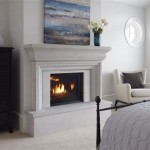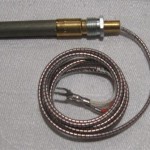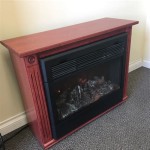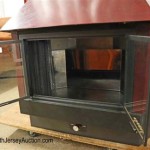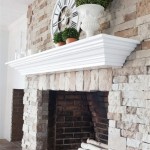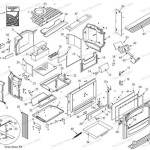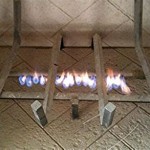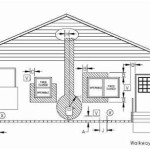Installing A Wood Burning Fireplace: A Comprehensive Guide
Installing a wood-burning fireplace is a significant home improvement project that can provide supplemental heat, create a warm, inviting atmosphere, and potentially increase property value. However, it's a complex undertaking that requires careful planning, adherence to building codes, and a thorough understanding of safety regulations. This article provides a comprehensive guide to the process, outlining the critical steps involved in installing a wood-burning fireplace safely and effectively.
Prior to commencing any work, a thorough assessment of the existing structure is essential. This includes evaluating the structural integrity of the intended location, confirming the presence of adequate clearance from combustible materials, and ensuring compliance with local zoning regulations and homeowner association guidelines. Remember, improper installation may not only be unsafe but can also invalidate your homeowner's insurance policy.
The initial step involves a thoughtful decision regarding the type of fireplace to be installed. Options include prefabricated fireplaces, which come as complete units ready for installation, and masonry fireplaces, constructed from brick, stone, or concrete blocks. Prefabricated fireplaces are generally less expensive and easier to install, while masonry fireplaces offer greater design flexibility and a more traditional aesthetic. A careful consideration of budget, desired style, and structural limitations will help determine the most suitable choice.
Once the type of fireplace is selected, obtaining the necessary permits is paramount. Local building codes dictate specific requirements for fireplace installation, including chimney height, clearances to combustibles, and fire safety features. Contacting the local building department is crucial to understand the permit application process and ensure full compliance. Failure to obtain the required permits can result in costly fines and mandatory removal of the fireplace.
Key Point 1: Site Preparation and Framing
The preparation of the installation site is a crucial step that directly impacts the safety and longevity of the fireplace. This involves removing any existing flooring, wall coverings, or other obstructions from the area where the fireplace will be located. Ensure the subfloor is level and structurally sound to support the weight of the fireplace and chimney system.
Framing the fireplace opening is the next stage. This involves constructing a wooden framework around the designated space, providing structural support for the fireplace unit and chimney. The framing must adhere to the manufacturer's specifications for the chosen fireplace model, ensuring proper clearances and fire resistance. Use fire-rated lumber for any framing components in close proximity to the fireplace.
Accurate measurements are essential during the framing process. Double-check all dimensions to ensure the fireplace will fit snugly within the framed opening. Pay particular attention to clearances to combustible materials, such as wood framing, insulation, and electrical wiring. These clearances are critical for preventing fires and ensuring the safe operation of the fireplace.
Creating pathways for ventilation and electrical wiring is also important at this stage. If the fireplace requires external combustion air, ensure a properly sized duct is installed to bring fresh air into the firebox. Run any necessary electrical wiring for the fireplace's blower or other accessories, adhering to electrical code requirements.
Consider the placement of heat shields. Many prefabricated fireplaces require heat shields to protect nearby combustible materials from excessive heat. Install these shields according to the manufacturer's instructions, ensuring they are properly positioned and securely fastened.
Key Point 2: Chimney Installation and Venting
The chimney is a critical component of a wood-burning fireplace, responsible for safely venting combustion gases outside the home. Proper chimney installation is essential for preventing carbon monoxide poisoning and chimney fires. Select a chimney system that is specifically designed for wood-burning fireplaces and is compatible with the chosen fireplace model.
Chimney systems typically consist of multiple sections that are connected and extended through the roof. Follow the manufacturer's instructions carefully when assembling the chimney sections, ensuring each connection is properly sealed and secured. Use the appropriate sealant or connectors recommended by the manufacturer to prevent leaks.
When passing the chimney through the roof, ensure adequate clearance from combustible materials such as rafters and sheathing. Use a firestop spacer to maintain this clearance and prevent the spread of fire. The chimney should extend a minimum of two feet above the highest point within ten feet horizontally, as required by building codes. This ensures proper draft and prevents downdrafts that can cause smoke to enter the home.
Flashing is crucial for preventing water leaks around the chimney penetration. Install flashing around the chimney on the roof, creating a watertight seal. Use a high-quality roofing sealant to further protect against leaks. Inspect the flashing regularly and repair any damage or deterioration promptly.
Consider installing a chimney cap. A chimney cap prevents rain, snow, and debris from entering the chimney, protecting the flue from corrosion and blockages. It also prevents animals from nesting in the chimney. Choose a chimney cap that is appropriately sized for the chimney and is made from durable materials such as stainless steel.
Key Point 3: Firebox Installation and Finishing
The firebox is the heart of the fireplace, where the fire is contained and combustion occurs. The installation of the firebox must be done meticulously, following the manufacturer's instructions precisely. Ensure the firebox is level and properly aligned within the framed opening.
Connect the firebox to the chimney system, ensuring a secure and airtight connection. Use the appropriate connector or adapter recommended by the manufacturer. Seal any gaps or seams with high-temperature sealant to prevent flue gases from escaping into the home.
Install any required firebrick or refractory panels inside the firebox. These materials protect the firebox from the extreme heat of the fire and help to radiate heat into the room. Follow the manufacturer's instructions for installing the firebrick or refractory panels, ensuring they are properly positioned and secured.
Once the firebox is installed, the finishing touches can be added. This may include installing a mantel, facing the fireplace with brick, stone, or tile, and adding decorative trim. Ensure all finishing materials are non-combustible or are installed with adequate clearance from the firebox opening.
Prior to operating the fireplace, conduct a thorough inspection to ensure all components are properly installed and secured. Check for any gaps or leaks in the chimney system, and verify that all clearances to combustible materials are maintained. Consult with a qualified professional to inspect the installation and ensure it meets all safety requirements.
Before the first fire, it's advisable to perform a "break-in" period. This involves starting small fires initially and gradually increasing the size and duration of the burns. This allows the firebox and chimney to slowly acclimate to the heat and reduces the risk of cracking or damage. Always operate the fireplace with the damper open to ensure proper ventilation. Keep a fire extinguisher nearby and adhere to all fire safety precautions.
Regular maintenance is crucial for ensuring the safe and efficient operation of the wood-burning fireplace. This includes cleaning the chimney annually to remove creosote buildup, which can contribute to chimney fires. Inspect the firebox and chimney regularly for any signs of damage or deterioration, and make any necessary repairs promptly.
By following these guidelines and diligently adhering to safety regulations, installing a wood-burning fireplace can be a rewarding home improvement project. However, it is crucial to understand the complexities involved and to prioritize safety throughout the entire process. When in doubt, consulting with a qualified professional is always the best course of action.

Can You Install A Wood Stove In Fireplace Direct Stoves

Wood Stove Installation The Ultimate Diy Companion 2024

New Wood Burning Prefab Fireplaces Complete Fireplace Installs

Fireplace Installation Full Service Chimney Serving Kansas City Area

Wood Burning Fireplaces Fireplace Installation Madison Wi Verona

Wood Burning Stoves S Installation In Burlington Wi

Your Guide To Wood Stove Installation Full Service Chimney

Wood Fireplace S Installation Chimney Sweeps Of America

How To Install A 3000 Wood Fireplace

Wood Stove Installation Diagram
Related Posts

